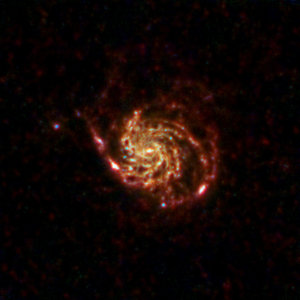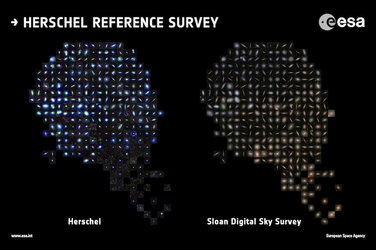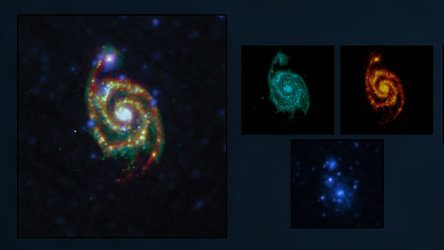Accept all cookies Accept only essential cookies See our Cookie Notice

About ESA
The European Space Agency (ESA) is Europe’s gateway to space. Its mission is to shape the development of Europe’s space capability and ensure that investment in space continues to deliver benefits to the citizens of Europe and the world.
Highlights
ESA - United space in Europe
This is ESA ESA facts Member States & Cooperating States Funding Director General Top management For Member State Delegations European vision European Space Policy ESA & EU Space Councils Responsibility & Sustainability Annual Report Calendar of meetings Corporate newsEstablishments & sites
ESA Headquarters ESA ESTEC ESA ESOC ESA ESRIN ESA EAC ESA ESAC Europe's Spaceport ESA ESEC ESA ECSAT Brussels Office Washington OfficeWorking with ESA
Business with ESA ESA Commercialisation Gateway Law at ESA Careers Cyber resilience at ESA IT at ESA Newsroom Partnerships Merchandising Licence Education Open Space Innovation Platform Integrity and Reporting Administrative Tribunal Health and SafetyMore about ESA
History ESA Historical Archives Exhibitions Publications Art & Culture ESA Merchandise Kids Diversity ESA Brand Centre ESA ChampionsLatest
Space in Member States
Find out more about space activities in our 23 Member States, and understand how ESA works together with their national agencies, institutions and organisations.
Science & Exploration
Exploring our Solar System and unlocking the secrets of the Universe
Go to topicAstronauts
Missions
Juice Euclid Webb Solar Orbiter BepiColombo Gaia ExoMars Cheops Exoplanet missions More missionsActivities
International Space Station Orion service module Gateway Concordia Caves & Pangaea BenefitsLatest
Space Safety
Protecting life and infrastructure on Earth and in orbit
Go to topicAsteroids
Asteroids and Planetary Defence Asteroid danger explained Flyeye telescope: asteroid detection Hera mission: asteroid deflection Near-Earth Object Coordination CentreSpace junk
About space debris Space debris by the numbers Space Environment Report In space refuelling, refurbishing and removingSafety from space
Clean Space ecodesign Zero Debris Technologies Space for Earth Supporting Sustainable DevelopmentLatest
Applications
Using space to benefit citizens and meet future challenges on Earth
Go to topicObserving the Earth
Observing the Earth Future EO Copernicus Meteorology Space for our climate Satellite missionsCommercialisation
ESA Commercialisation Gateway Open Space Innovation Platform Business Incubation ESA Space SolutionsLatest
Enabling & Support
Making space accessible and developing the technologies for the future
Go to topicBuilding missions
Space Engineering and Technology Test centre Laboratories Concurrent Design Facility Preparing for the future Shaping the Future Discovery and Preparation Advanced Concepts TeamSpace transportation
Space Transportation Ariane Vega Space Rider Future space transportation Boost! Europe's Spaceport Launches from Europe's Spaceport from 2012Latest

Nearby M33 galaxy blossoming with star birth
Thank you for liking
You have already liked this page, you can only like it once!
The spiral galaxy M33, also known as the Triangulum Galaxy, is one of our closest cosmic neighbours, just three million light-years away. Home to some forty billion stars, it is the third largest in the Local Group of galaxies after the Andromeda Galaxy (M31) and our own Milky Way.
M33 is popular with astrophotographers and from exceptionally dark sites it can even be seen with the naked eye. Thanks to its orientation, we can enjoy a face-on view of the beautiful spiral structure of the galaxy's disc.
This image, from ESA's Herschel space observatory, shows M33 in far-infrared light, revealing the glow of cosmic dust in the interstellar medium that permeates the galaxy. The patchy, disorganised structure of M33's spiral arms resembles a tuft of wool, leading astronomers to classify it as a flocculent spiral galaxy.
The brightest spots sprinkled along the spiral arms are dense pockets of gas and dust where massive stars are born. The most prominent of these is NGC604, visible in the upper left spiral arm. This is an enormous star-forming region where hundreds of thousands of stars are taking shape.
The image is a composite of the wavelengths: 70 microns (blue), 100 microns (green) and 160 microns (red). At the shortest wavelengths, astronomers trace warmer dust, revealing individual regions of star formation and parent clouds. At longer wavelengths, they detect emission from colder dust, outlining some of the cool dust reservoir along the galaxy’s winding spiral arms. This is where stars may be born in the future.
The image spans about one degree on each side; north is up and east is to the left. The data were collected with Herschel's PACS instrument as part of the Herschel M33 extended survey (HerM33es) Key Programme to study the star formation in the Triangulum Galaxy.
-
CREDIT
ESA/Herschel/PACS/HerM33es Key Programme/C. Kramer/M. Boquien -
LICENCE
ESA Standard Licence

Herschel’s view of the Pinwheel Galaxy

Herschel survey in infrared and visible

Herschel’s view of NGC 1097

The whirl of stellar life















 Germany
Germany
 Austria
Austria
 Belgium
Belgium
 Denmark
Denmark
 Spain
Spain
 Estonia
Estonia
 Finland
Finland
 France
France
 Greece
Greece
 Hungary
Hungary
 Ireland
Ireland
 Italy
Italy
 Luxembourg
Luxembourg
 Norway
Norway
 The Netherlands
The Netherlands
 Poland
Poland
 Portugal
Portugal
 Czechia
Czechia
 Romania
Romania
 United Kingdom
United Kingdom
 Slovenia
Slovenia
 Sweden
Sweden
 Switzerland
Switzerland
























